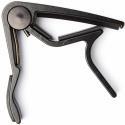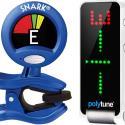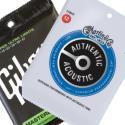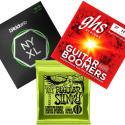Capo Chart: How to Use It. Best Process Explained

New to capo? Using a capo chart is a must, it'll make learning a breeze.
So, don't fret (pun intended)! In this guide, I'll tell you all you need to know about...
I'll also provide some tips that'll make learning capo easier and answer questions related to capos.
Let's start by defining the capo.
What Is A Capo?
If you want to play guitar chords without barring the strings, a capo has you covered.
It's a handy tool for holding a specific fret on the guitar. So, no more sore-index-finger-day playing barre chords for you.
Used on both electric and acoustic, a guitar capo is like a movable guitar nut. Its position changes the pitch of the guitar strings, allowing you to play first-position chords at higher frets.
These first-position chords are the basic chord shapes that guitarists start out with, so this simplifies an otherwise complex set of barre chords. The pitch of the chord shape you play is determined by the position of the capo on the guitar neck.
Guitar capos have different shapes for different uses. For example, a steel-string guitar has a curved neck profile, while a classical guitar has a flat one. So, choose the right capo for each to maximize its function and reduce the chance of damaging your instrument.
You can get an idea of the ideal capo shapes and types by referring to our article on the best capos for guitar.
What Is A Capo Chart?

No more searching in the dark or manually counting key changes. This table lays it out in an easy-to-understand format for you, you see all the chords and their pitches as the capo moves up the neck.
A capo chart is a reference table showing how capo placement changes chords on the fretboard.
With this, you can confidently identify the perfect capo placement for playing open chords that match the key of the song you're playing.
How To Read A Guitar Capo Chart?
The top row of the capo chart shows the chord shapes. Then, the row below shows the chord names.

Next, the first column on the left shows the fret numbers for capo placement. Lastly, the chords in the middle indicate the pitch achieved after clamping the capo to the corresponding fret number.

How To Use a Capo Chart
Let's say, for example, that you want to play a B chord using an open G chord shape. You need to...
-
Find the G chord shape in the first two rows.
-
Locate the B chord on the colum underneath it.
-
Then clamp your capo on the corresponding fret number, in this case, the fourth fret.
-
Form a G chord shape. And just like that, you now have a B chord sound while playing an open G chord.
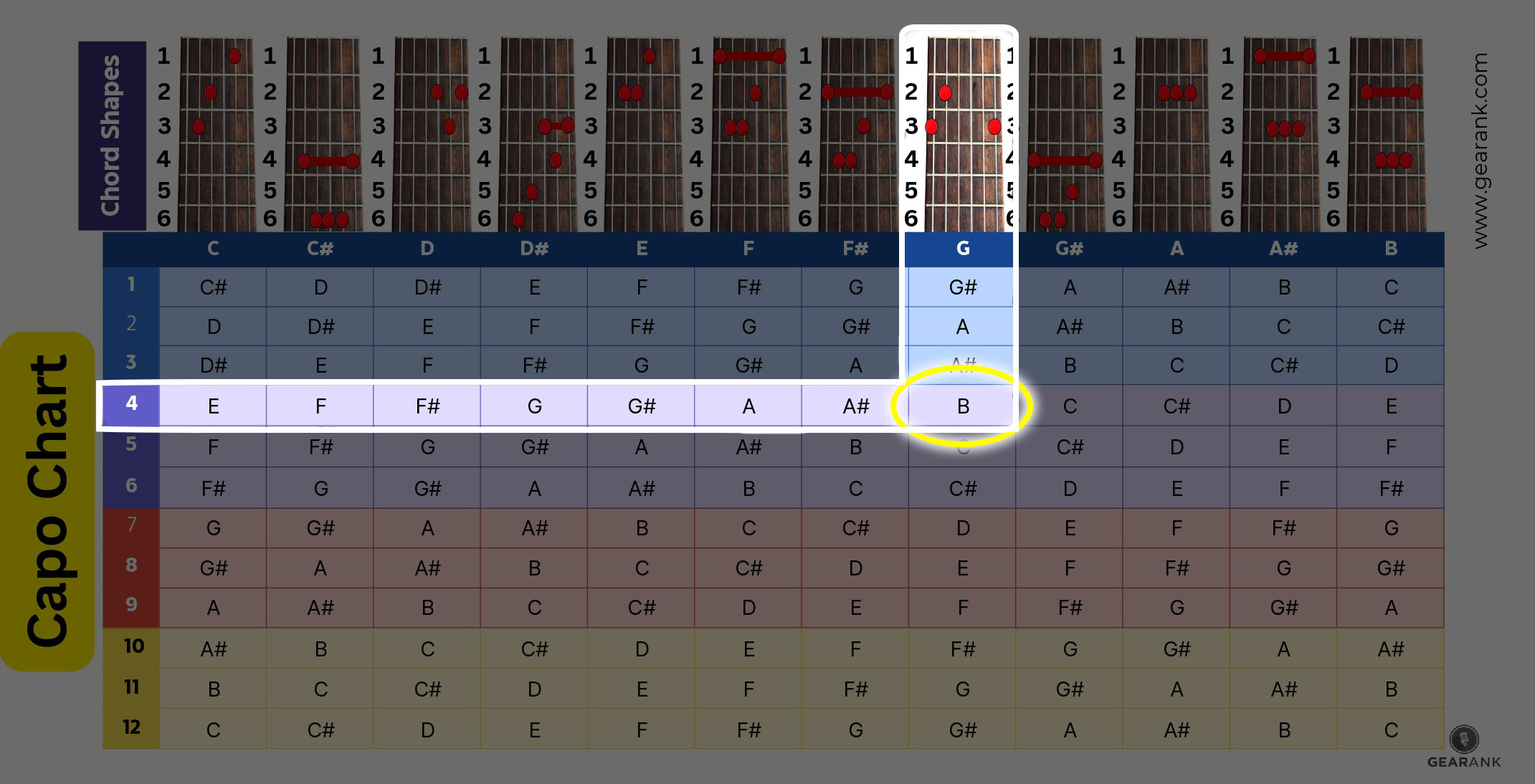
Now, how about if the chord shape has a barre in it, like an F# chord? To play it like an open chord...
-
Look for the original chord shape.
-
Place your capo on the barred strings.
-
Then play the remaining notes. You now have an F# chord, played like an open E chord.

Most of the time, the capo position is dictated by where the original guitarist used the capo. But you can be creative in capo placement, move it around but still play the same keys. This will give you distinct sound textures that can make songs sound fresh.
Note: Capos commonly stay in one fret for an entire song. Moving it mid-song is possible, but it can be tricky. So, I advise you to keep it in one place.
Who Can Use A Capo Chart?
From beginners to experienced guitarists and even seasoned professionals, all can use the capo chart as a reference.
Beginners
The capo chart is a must for beginners. So, if you're just starting out, this article is perfect for you.
Since you're still learning the fretboard, tricky barre chords should be the least of their concerns.
This allows you to use basic chord shapes to play songs that normally would require complex barre chords.
You still need to learn guitar chords so I don't recommend avoiding barre chords altogether. But knowing how to use a capo will let you play more songs with just the basic open chords.
Even when you've become accustomed to the barre chords, capos offer an easier way to play songs.
Professionals Guitar Players
Understanding how a capo chart works isn't just beneficial for students. Likewise, professional musicians and songwriters can benefit from this handy tool.
For instance, use it when writing songs or accompanying vocalists. By moving the capo up and down the neck, you can better match the specific vocal timbre and range of singers.
You can modify this chart for use with non-standard tunings (like drop-D and half-step down tuning) and open string licks higher up the fret.
Some pros implement partial capos for complex combinations of fretted and open string notes. This will also require modified charts.
Tips
-
Capos serve as a movable guitar nut or a barring finger on a barre chord. With that in mind, visualize how to form chords around it.
-
Using the capo for minor chords follows the same principle.
For example, we'll turn an A minor chord into a B minor chord. Simply move the A minor chord up a whole step and place the capo on the second fret. You now have a B minor chord.
-
As you capo the frets, you also shorten the length of your strings. So consider this: longer strings = lower frequency, meaning a lower pitch, and shorter strings = higher frequency, meaning a higher pitch.
-
Ukelele on guitar? When you place your capo on the 5th fret of a guitar, you'll get G, C, E, and A when played from low to high. This sounds similar to a Soprano, Tenor, or Concert Ukulele, but there's one key difference. On the guitar, the G string is the lowest one, while on the ukulele, it's the opposite.
-
If your guitar is not properly intonated, it will progressively get more out of tune as you move your capo up the fretboard. Capos are a good way to check for intonation problems.
Final Thoughts
Newbies and professionals alike can benefit from the capo chart.
It makes finding capo positions and chords easier. And even when you're already familiar with the notes on the fretboard, having a visual guide is convenient.
The capo chart can also help you broaden your guitar string knowledge and your musical understanding in general.
Even when you're already familiar with the notes on the fretboard, having a visual guide can be a big help.
Eventually, you'll get better and better, and soon you might not even need it anymore.
But in case you feel lost using a capo again, it's good to know that there's a tool that can guide you.
Now onto some capo-related questions.
FAQs
What Are The Types Of Capo Charts?
There are two main types of capo charts, namely, a capo key chart and a capo chord chart.
A capo chord chart allows you to see the specific chord shapes and capo frets. This helps in transposing difficult chords into easy guitar songs.
A capo key chart is much more complex but still useful. This chart shows each note and individual fret for each guitar string.
What Is A Partial Capo and A Spider Capo?
Unlike a regular guitar capo, which covers all of the strings, a partial capo covers only some of the strings, leaving others open.
A spider capo is another variation of a partial capo. Its unique feature is that it can be fine-tuned to capo each specific string separately.
Does A Capo Transpose Down Or Up?
As you go up the fret, the capo transposes notes up. So, make sure you're conscious of the changes in pitch on each string to find the correct note or chords. The reverse is also true, as you move the capo to the lower frets, you get lower pitch.
Contributors:
Jerome Arcon - Co-writer



